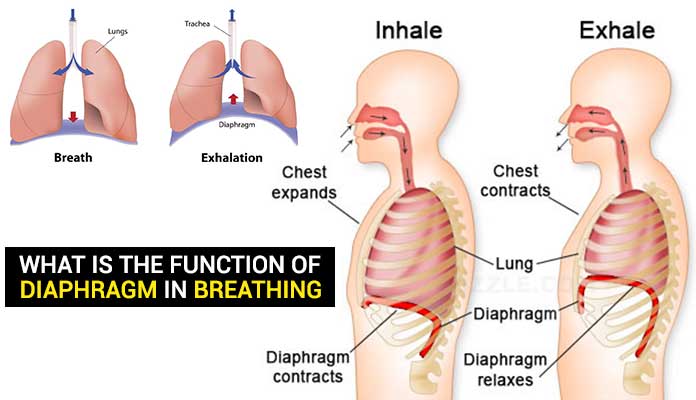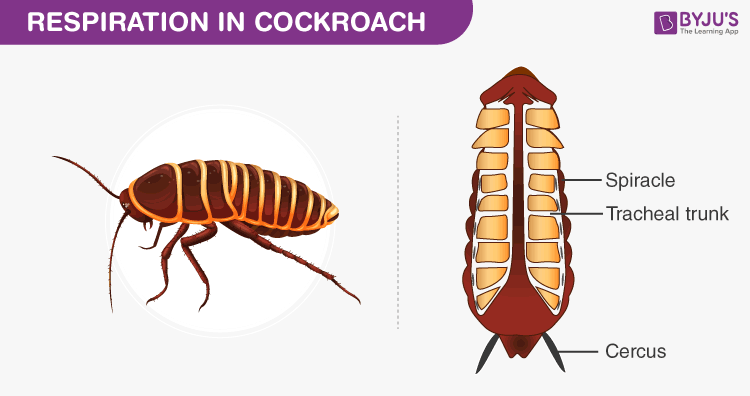7th Grade > Biology
RESPIRATION IN ORGANISMS MCQs
Total Questions : 96
| Page 4 of 10 pages
Answer: Option A. -> True
:
A

:
A
- The floor of the chest cavity has a thick muscular partition known as the diaphragm. It separates the abdominal cavity and the thoracic cavity.
- It performs a significant function in respiration. It moves up and down during inhalation and exhalation.
- Lowering of the diaphragm causes a decrease in the pressure on lungs. Due to which, air moves into the lungs through nose.
- When diaphragm rises up, pressure on the lungs increases. Due to which, air moves out.

Answer: Option D. -> glucose
:
D
Cells breakdown glucose to produce water and carbon dioxide. Energy is released in the form of ATP. This process is called cellular respiration. When this process happens in the presence of oxygen, it is called aerobic respiration and when it happens in the absence of oxygen, it is called anaerobic respiration.
It can be summarised as:
C6H12O6+6O2→6CO2+6H2O+38ATP
:
D
Cells breakdown glucose to produce water and carbon dioxide. Energy is released in the form of ATP. This process is called cellular respiration. When this process happens in the presence of oxygen, it is called aerobic respiration and when it happens in the absence of oxygen, it is called anaerobic respiration.
It can be summarised as:
C6H12O6+6O2→6CO2+6H2O+38ATP
Answer: Option A. -> cramps
:
A
Lactic acid is a byproduct of anaerobic respiration of glucose. During heavy exercises or prolonged physical activity, there is a deficit of oxygen required to enableall the muscle cells to generate energy aerobically. Muscle cells then respireanaerobically andproduces lactic acid. Accumulation of lactic acid in the muscles causes cramps.
:
A
Lactic acid is a byproduct of anaerobic respiration of glucose. During heavy exercises or prolonged physical activity, there is a deficit of oxygen required to enableall the muscle cells to generate energy aerobically. Muscle cells then respireanaerobically andproduces lactic acid. Accumulation of lactic acid in the muscles causes cramps.
Answer: Option B. -> skin
:
B
∙ Amphibians like frogs breathe through their skin when they are submerged in water. This is called cutaneous respiration. In the land, they breathe through their lungs.
∙ Gills are present in fishes.
∙ Trachea is the site of gaseous exchange in insects.
∙ All mammals have lungs to breathe.
:
B
∙ Amphibians like frogs breathe through their skin when they are submerged in water. This is called cutaneous respiration. In the land, they breathe through their lungs.
∙ Gills are present in fishes.
∙ Trachea is the site of gaseous exchange in insects.
∙ All mammals have lungs to breathe.
Answer: Option B. -> spiracles
:
B
Cockroach has small openings on the sides of its body called spiracles. Oxygen rich air rushes through the spiracles into the tracheal tubes. It then diffuses into the body tissue and reaches all the cells of the body. Carbon dioxide from the cells goes into the tracheal tubes and ultimately moves out through the spiracles.

:
B
Cockroach has small openings on the sides of its body called spiracles. Oxygen rich air rushes through the spiracles into the tracheal tubes. It then diffuses into the body tissue and reaches all the cells of the body. Carbon dioxide from the cells goes into the tracheal tubes and ultimately moves out through the spiracles.

:
Presence of oxygen: 1 Mark
Absence of oxygen: 1 Mark
In the presence of oxygen, glucose breaks downinto carbon dioxide andwater with the release ofenergy.
In the absence of oxygen, glucose breaks down into alcohol andcarbon dioxidewith the release of energy.
:
Answers: 1 Mark each
(1)During emergency conditions (e.g. Lung failure) when lungs don't work properly, artificial respiration is required.
(2)The victim gets the oxygen through ventilators which act as artificial lungs.
(3)The person is kept on artificial respiration temporarily, until heregains his health and starts breathing naturally.
:
Functions: 1 Mark each
1. Diaphragm and ribs help in breathing activity.
2. During inhalation, ribs move up and diaphragm moves down to increase the chest cavity space.Lungs get filled with air.
3. During exhalation, ribs move down and diaphragm moves up to its former position. Thisreduceschest cavity space and air is pushed out.

















